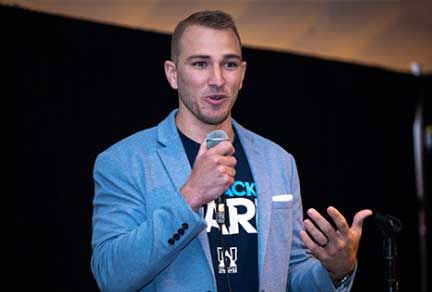Wet AMD gene therapy: Success depends on a comprehensive development strategy
Wet age-related macular degeneration (AMD) is a crowded, competitive therapeutic market dominated by highly effective, well-established, and increasingly affordable anti-vascular endothelial growth factor (VEGF) injectables. New wet AMD therapies will compete against a range of products, from biosimilars for ranibizumab (Lucentis), aflibercept (Eylea), and compounded bevacizumab (Avastin) to branded drugs like 8 mg aflibercept (Eylea HD), faricimab (Vabysmo), and the continuous delivery ocular implant ranibizumab injection (Susvimo)—initially approved by the FDA in 2021 and under review by the EMA as of September 3, 2025.1
Existing treatments have set a high bar for efficacy, improving or stabilizing vision for more than 90 percent of patients in clinical trials.2,3,4,5 Meanwhile, retina specialists have built profitable practice models around their use. However, these products necessitate frequent eye injections (ranging from every 4 to 24 weeks), and real-world results have not equaled those of clinical trials due to factors such as fewer injections resulting in undertreatment.6,7
Retinal gene therapies offer the promise of a one-time, long-lasting treatment for wet AMD. However, for a wet AMD gene therapy to succeed commercially, drug developers must present a clear and compelling value proposition that aligns with the sometimes-different priorities of key stakeholders: regulators, clinicians, patients, and payers.
A unified value story comes from intentional development decisions
At Parexel, we have worked with biotech and large pharma companies on more than 150 ophthalmology projects over the past five years, including several gene therapies for wet AMD. Our experience leads us to believe that a holistic development strategy in which R&D, manufacturing, regulatory, clinical, and market access teams collaborate from the earliest product planning stages is essential. Missteps early on can lead to commercial failure and lack of patient access, regardless of therapeutic value. During later-stage clinical development, the strategy may need to be refined as new competitors emerge.
Critical decisions—such as the route of administration, trial designs, target patient groups, and secondary endpoint selection—must support a unified value story. In this article, we discuss the priorities of the four stakeholders.
Regulators value early engagement and CMC excellence
Developing gene therapies is a complex process that often involves unexpected obstacles. With advancing science, regulatory precedents remain important; however, sponsors may need to consider novel approaches that diverge from guidance documents. In these cases, sponsors should take advantage of early meetings with agencies to seek advice from experienced regulatory assessors. When evaluating novel modalities for wet AMD, the regulatory requirements differ depending on the stage of development. The first step is mapping out a development plan that ensures the product is consistently produced. Chemistry, manufacturing, and controls (CMC) challenges may necessitate adjustments to non-clinical and clinical programs; therefore, we always recommend multidisciplinary collaboration and interaction.
Meetings such as a pre-investigational new drug (IND) meeting with the FDA or a scientific advice (SA) procedure with a national European agency or the EMA’s Committee for Medicinal Products for Human Use (CHMP) should be carefully timed. The interactions with regulators are captured in meeting minutes, and sponsors are advised to follow the provided feedback or have strong arguments for why they did not. It is crucial to conduct a comprehensive internal gap analysis and develop an integrated, cross-functional plan to maximize the value from regulatory interactions. It is acceptable to diverge from agency feedback if there are scientifically and clinically sound reasons; however, any deviation will be scrutinized.
A common and costly mistake is to seek formal advice too early. For example, at Parexel, we recently had an urgent consultation with a gene therapy sponsor that had requested and received an SA meeting before their CMC processes were stable, and their clinical trial design was mature. They met with regulators to review their plan for an international study testing multiple dose levels in different regions, but later discovered they needed to remanufacture some of the doses. Scaling adeno-associated virus (AAV) vector manufacturing is challenging due to the need for large quantities of highly pure rAAV particles at high yields while minimizing empty AAV capsids, which can form from imbalances during vector production.8 The sponsor would have been in a much better position to benefit from the SA meeting if they had waited a few months, enabling them to ask more questions about how CMC changes might impact the clinical plan. Because our regulatory team includes former EMA and FDA gene therapy assessors, we were able to review the issues and quantify the risks associated with potential solutions, providing them with options on how to proceed. The company revised its CMC processes and study design and initiated the study.
Approaching regulators with an incomplete picture—for example, focusing only on CMC questions without a clear clinical plan—can result in fragmented, suboptimal advice. This can lead to expensive remanufacturing of trial materials because the clinical strategy is misaligned with the manufacturing process, causing delays. At Parexel, we find that many sponsors, particularly those with long experience in small-molecule development, underestimate the CMC regulatory hurdles of AAV-based gene therapies. The manufacturing processes, potency assays, and product specifications for gene therapies are exceptionally challenging, and strategic regulatory work on CMC can account for as much as 50 percent of the total effort in early-stage planning. A robust and well-documented manufacturing process is the foundation upon which future success is built.
The established primary efficacy endpoint for regulatory approval in wet AMD is non-inferiority in the mean change of best-corrected visual acuity (BCVA) at one year compared to a standard-of-care anti-VEGF agent. Because existing treatments are so effective, proving statistical superiority on this measure is an extremely high bar. Even if one-year primary efficacy data are sufficient for approval, regulators require and desire at least five years of follow-up data; new therapies may have significant benefits that only become apparent over the longer term.
Going forward, once gene therapies for wet AMD are approved, the primary endpoint will likely remain similar. However, to secure reimbursement and market share, sponsors may need to provide more clinical efficacy data, including showing a greater improvement in BCVA. As we gain a deeper understanding of the pathophysiology of wet AMD, we may see gene therapies with different mechanisms that can potentially reverse the disease. This could lead to a significant change in how regulators view relevant endpoints for different stages of the disease.
Clinicians want effective drugs that fit in their practice model
Most retina practices in the United States have a "buy-and-bill" financial structure. They purchase anti-VEGF drugs, administer them in-office, and charge payers for the cost of the drug plus a margin. This generates a steady and profitable revenue stream from patients who need regular, lifelong injections. A one-time gene therapy, while attractive clinically, threatens this economic model. It replaces a decade's worth of revenue from patients with a single costly drug and procedure. This creates a strong financial disincentive for clinicians to adopt the new technology, a barrier often underestimated by sponsors.
Retina specialists have highly optimized workflows centered around intravitreal injections. Gene therapies delivered via this route, or the similar suprachoroidal route, have a significant advantage since they suit established practice patterns. Sponsors must consider how their product can be integrated into the clinical workflow of most practices. For example, subretinal administration is a more complex and invasive procedure that falls outside the routine of many community-based retina specialists. Therapies requiring this route of delivery will likely experience slower adoption, initially confined to surgeons at major academic medical centers who are more comfortable with it. The choice of administration route directly informs the initial target market and launch strategy.
In a crowded market, clinicians will not adopt a new therapy for all patients. They need clear, evidence-based guidance on which specific patient groups are most likely to benefit. While the regulatory goal is to secure a broad label covering all wet AMD patients, the commercial launch must be highly targeted. Over time, there will likely be an opportunity to broaden the target patient population, mainly if sponsors have generated strong evidence.
At Parexel, we advise sponsors on how to design clinical trials to generate this evidence. This involves prospectively defining and enrolling enough patients in key subgroups to enable robust statistical analysis. Critical subgroups that we have advised clients to target include: individuals with a high treatment burden (those requiring six or more injections per year) who may be highly motivated to seek an alternative; patients who have a good response that wears off quickly, leading to fluctuating anti-VEGF levels and suboptimal visual acuity outcomes (who may benefit from the continuous, steady-state expression of gene therapy); or patients who face significant travel or caregiver burdens to attend frequent appointments.
Patients who achieve only a partial, suboptimal response to standard anti-VEGF therapy may be excellent candidates for future generations of retinal gene therapies, such as a gene therapy that encodes and expresses bispecific antibodies. Vabysmo (faricimab), a bispecific antibody that inhibits VEGF-A and angiopoietin-2 (ANG-2), the first dual-target wet AMD drug approved by the FDA in 2022, might be an interesting drug candidate. Clinical trials have established that faricimab, given at up to 16-week intervals, is non-inferior to aflibercept, given every eight weeks, and therefore has the potential to meaningfully reduce patient burdens.9
Beyond vision, clinicians may value objective anatomical endpoints, such as changes in retinal fluid, which can be visualized using optical coherence tomography (OCT). These objective measures provide tangible evidence that a therapy is having a biological effect on the disease process, offering a valuable complement to the more subjective BCVA endpoint. Sponsors should consider whether their gene therapy has the potential to show significant benefits on anatomical endpoints, and if so, make them secondary endpoints in pivotal trials.
Patients seek products with the right balance of risks and rewards
Wet AMD imposes heavy burdens on patients. They typically cannot drive, read, participate in their favorite hobbies, or recognize and “read” others’ faces, thereby missing social cues. The resulting loss of independence and reliance on family members and other caregivers can lead to mental health complications such as depression. Thus, a one-time treatment that frees patients from the relentless cycle of frequent and uncomfortable intravitreal injections could profoundly change their lives. One-time gene therapy could alleviate the logistical burden of travel, the reliance on caregivers, the anxiety preceding each appointment, and the risk of vision loss from missed treatments. For many, especially those with high injection frequencies, this promise may be powerful enough to make them consider a novel therapeutic approach.
However, one obstacle to patient acceptance is the psychological burden of making an irreversible change to the genes in their eyes. While injections are a recognized inconvenience, they are also temporary and well-understood. Gene therapy may involve permanent modification with long-term effects that are unknown. Patients will carefully compare the familiar burden of their current treatment with the risks of a new approach.
We have found that most patients prefer to follow rather than lead. They seek “social proof”—positive experiences from friends, family, or others in their community—before feeling comfortable enough to move forward. Physicians are also often hesitant to enroll their patients in early-phase studies because of the lack of safety data. This highlights the importance of initially focusing on patient groups with the greatest unmet needs, which are the most motivated to accept perceived risks.
Patient-reported outcome measures (PROMs) collected during clinical trials can capture patients’ views on how a product impacts their quality of life (QOL). These data can help patients’ decision-making. For example, along with good visual acuity, the preserved ability to drive strongly correlated with high QOL in patients with wet AMD in a recent study.10 Thus, sponsors might want to collect patient data on driving ability.
Payers prioritize durable efficacy and cost-effectiveness
A non-inferiority finding on BCVA is not a compelling differentiator for payers. Assuming a new product has similar (non-inferior) efficacy and safety, payers will focus on the treatment’s costs to determine access and utilization. To successfully make their case to payers, sponsors must build a comprehensive evidence package that demonstrates durable clinical effects—the key value proposition of gene therapy. At Parexel, we help sponsors plan and develop a comprehensive data package from the beginning. Our strategy for generating evidence includes:
- Designing Phase 1 and 2 trials so that long-term follow-up data can eventually be pooled with pivotal trial results;
- Utilizing the mandatory long-term (up to 15 years) safety follow-up as an opportunity to continue collecting efficacy and durability data; and
- Planning and committing to post-marketing registries, open-label extension (OLE) studies, and real-world evidence (RWE) studies to confirm that the durability observed in clinical trials translates to the real world.
The key to a broader value story lies in the selection of secondary endpoints. These must be thoughtfully chosen during trial design to provide convincing evidence for multiple stakeholders. At Parexel, we have advised sponsors on selecting secondary endpoints for wet AMD gene therapies that could support patient acceptance and market access. These include measures of treatment burden, such as the mean change in annualized injection frequency and the proportion of patients who require zero supplemental anti-VEGF injections over one or two years. Data from long-term follow-up studies can demonstrate that the reduction in treatment burden is sustained over time.
For wet AMD, payers will base the product value calculation almost entirely on the cost of multiple years of avoided anti-VEGF injections; they are unlikely to accept a price based on a hypothetical long-term benefit. A one-year primary endpoint from a pivotal trial is inadequate to justify a price reflecting five years (or longer) of efficacy. The key question from every payer will be: How long does the effect last? The commercial success of the product depends on the sponsor's ability to provide strong, long-term data in response to this question. Although five years of data will not be available at the time of marketing submissions, sponsors should work toward having comprehensive data within a year or two after launch.
Payers will assess both the budget impact and the cost-effectiveness of novel therapies. Budget impact is the immediate, short-term cost—how will this therapy affect premiums and expenditures in the next 1-2 years? Cost-effectiveness is the long-term view—does the treatment provide value for money over the patient's lifetime? Gene therapies create a fundamental tension between these two metrics, especially in the fragmented U.S. healthcare system, where patients often switch insurance plans. The plan paying the high upfront cost of the gene therapy is unlikely to be the same one that benefits from avoided injections five or ten years later.
Manufacturers should identify where gene therapies can best address unmet needs and gather evidence to support their application. Like clinicians, payers will want to see cost-effectiveness data in specific populations, when possible. For example, sponsors may focus on patients requiring more than six anti-VEGF injections annually, those facing compliance issues, patients with unilateral versus bilateral disease, or specific age groups. They might examine age as a factor, understanding that younger patients may have more time to benefit more from a single treatment, while older patients might be less worried about long-term side effects.
Gene therapy sponsors may need to consider innovative payment models (such as outcomes-based or risk-sharing agreements) to gain reimbursement, at least initially. However, they are operationally complex and have seen limited success. In wet AMD, there is little need for outcomes-based contracts because the treatment is likely to be effective for most patients; these agreements are most useful for expensive treatments that have a relatively low chance of working. The best strategy is to generate the robust, multi-year durability data needed to support a premium price in a traditional payment framework.
The wet AMD therapeutic landscape is poised for transformation
By 2030, the therapeutic landscape for wet AMD will transform significantly, with gene therapies at the forefront. They are expected to redefine the market, shifting the standard of care from frequent injections to more sustainable, long-lasting treatments that could profoundly improve the quality of life for patients with wet AMD. Several promising candidates are already in late-stage clinical trials. The success of these and future therapies will hinge on their ability to demonstrate long-term safety and reduced treatment frequency, both of which will be crucial for patient acceptance and market access.
Resources
- Roche receives CE mark for Contivue, its Port Delivery Platform containing Susvimo, for neovascular age-related macular degeneration (nAMD), Roche Corporate Press Release (September 3, 2025).
- Bevacizumab for neovascular age related macular degeneration (ABC Trial): multicentre randomised double masked study, BMJ (June 10, 2010).
- Ranibizumab for Neovascular Age-Related Macular Degeneration, NEJM (October 5, 2006).
- Ranibizumab versus Verteporfin for Neovascular Age-Related Macular Degeneration, NEJM (October 5, 2006).
- Intravitreal Aflibercept Injection for Neovascular Age-related Macular Degeneration, Ophthalmology (January 2014).
- The neovascular age-related macular degeneration database: multicenter study of 92,976 ranibizumab injections: report 1: visual acuity, Ophthalmology (May 2014).
- Ranibizumab for the treatment of wet AMD: a summary of real-world studies, Eye (December 4, 2015).
- Adeno-Associated Virus Vectors: Principles, Practices, and Prospects in Gene Therapy, Viruses (February 9, 2025).
- Efficacy, durability, and safety of intravitreal faricimab up to every 16 weeks for neovascular age-related macular degeneration (TENAYA and LUCERNE): two randomized, double-masked, phase 3, non-inferiority trial, The Lancet (February 19, 2022).
- Factors affecting quality of life in patients with neovascular age-related macular degeneration, AJO International (October 3, 2024).



